Effect of Low Temperature and Long Duration Scalding on Feather Removing and Breast Meat Over Heated of Spent Laying Hens
-
摘要: 本研究目的在于通过调整浸烫参数的方式减少淘汰蛋鸡在屠宰加工中的损失。以饲养日龄为400 d的淘汰蛋鸡作为研究对象,探究不同浸烫方式对其羽毛去除效果及皮下肌肉过熟程度的影响。分别设置三种温度和时间的浸烫组合:65 ℃-3 min(高温浸烫,High Temperature Scald,HS)、60 ℃-4 min 20 s(中温慢烫,Middle Temperature Slow Scald,MSS)、58 ℃-4 min 20 s(低温慢烫,Low Temperature Slow Scald,LSS),并以未经浸烫的淘汰蛋鸡作为对照组。通过测定浸烫后去羽力(Feather Retention Force,FRF)及计数残留羽毛数量表征浸烫脱毛效果。通过测定肉色、测量过熟区域深度、DSC扫描、拉曼光谱扫描表征不同浸烫处理对皮下肌肉过熟程度。浸烫后淘汰蛋鸡HS组与LSS组羽毛去除效果无显著差异,MSS组去羽力与残留羽毛数量显著低于另外两处理组(P<0.05),两种残留羽毛计数结果显示采用长时间浸烫能够使毛根数量减少。浸烫后鸡胸肉L*值显著高于对照组(P<0.05),其中HS组L*值比LSS、MSS组分别显著高出5.33与4.75(P<0.05)。沿肌纤维方向切割鸡胸肉发现截面出现明显分层(白色肉与正常肉),HS组白色肉厚度相比LSS组与MSS显著增加。DSC结果显示虽然三种浸烫处理均会使淘汰蛋鸡胸肉肌球蛋白变性,但是HS组胸肉中肌浆蛋白或胶原蛋白以及肌动蛋白的变性程度均高于其他两处理组。蛋白质二级结构相对含量显示HS组胸肉蛋白质变性程度最高。综合羽毛去除效果结果与胸肉过熟结果,得到淘汰蛋鸡最适浸烫参数为:60 ℃-4 min 20 s。本研究在抑制浸烫中皮下肌肉过熟程度的同时提升了浸烫脱毛效果,为企业屠宰淘汰蛋鸡提供技术参考。Abstract: The purpose of this study was to reduce the loss of spent laying hens during slaughtering by adjusting the parameters of scalding. The research object of this study was the spent laying hens with a rearing age of more than 400 days. The research meant to explore the effect of scalding methods on feather removing and muscle overheating. Three scalding parameters were set as follow: 65 ℃-3 min (high temperature scalding, HS), 60 ℃-4 min 20 s (medium temperature and slow scalding, MSS), and 58 ℃-4 min 20 s (low temperature and slow scalding, LSS). Broilers without scalding were set as the control group. The defeathering effect was characterized by measuring the feather retention force (FRF) and counting the number of feathers remaining after defeathering. The overheating degree of breast muscle was characterized by measuring meat color, depth of overheating area, DSC scanning and Raman spectrum scanning. The results showed that no significant difference in feather removal effects between HS treatments and LSS treatments, while the feather retention force and residual feather number of MSS treatment were significantly lower than those of the other two groups (P<0.05). Residual feather counting results showed that the number of feather roots could be reduced by using long time scalding. The L* value of chicken breast after scalding was significantly higher than that of control group (P<0.05), and the L* value in HS treatments was 5.33 and 4.75 significantly higher than that in LSS and MSS treatments (P<0.05), respectively. When the breast meat was cut along the direction of muscle fiber, it was found that the cross section was significantly stratified (white meat and normal meat). The thickness of white meat in HS treatments was significantly higher than that in LSS and MSS treatments, indicating that the two slow scalding treatments could significantly reduce the degree of breast meat overheating. DSC results showed that although all three scalding treatments resulted in denaturation of myosin, HS treatment induced more denaturation degree of sarcoplasmic protein, collagen and actin compared to the other two treatments. The protein secondary structure relative content showed that the protein denaturation of breast in HS group was the highest. Based on the results of feather removal and breast meat overheating, the optimal scalding parameter combination for laying hens was 60℃-4 min 20 s. This study not only reduced the degree of overheating of breast muscles, but also improved the effect of feather removing, which provided technical reference for enterprises to slaughter spent laying hens.
-
中国是蛋鸡养殖大国,2021年在产的高产蛋鸡存栏量达11.07亿只[1]。淘汰蛋鸡其实尚存在肉用价值,在中国其常作为肉类的来源之一,经屠宰后加工成为肉制品[2]。屠宰加工是将淘汰蛋鸡的毛鸡转变为胴体,进而实现其肉用价值的重要步骤。在屠宰加工生产线中,浸烫脱毛是一道重要工艺,其意义在于采用高温的处理方式破坏鸡皮肤与羽毛连接的毛囊结构,使羽毛松脱,进而在之后的脱毛工艺中更容易将体表羽毛完整去除[3]。对于饲养日龄为400 d的淘汰蛋鸡而言,其在长期的饲养过程中,羽毛根部与毛囊的结合程度与一般肉鸡相比更加紧密[4],这为其浸烫脱毛工艺带来较大挑战。
针对不同品种、饲养日龄的肉鸡,其浸烫处理方式也有所不同,这一点在也体现在地域差异上。美国在对5~6周龄白羽肉鸡进行浸烫处理时,通常采用两种不同的浸烫方式,分别为硬烫(58~60 ℃-90 s)与软烫(53~55 ℃-180 s)[1]。研究显示两种浸烫处理对白羽肉鸡羽毛松脱效果影响程度相当,且软烫处理后的肉鸡产品品质更优[5]。目前国内对饲养日龄为60~180 d的黄羽肉鸡通常采用64~67 ℃-60~120 s温度-时间组合进行浸烫处理[6]。可以看出,国际上选择不同浸烫方式的温度区间较小,这是由于超出该温度区间便失去浸烫脱毛效果,或对肉鸡产品起到负面影响,如皮肤破裂与肌肉烫白[7]。林捷等[8]采用不同的温度-时间组合参数对饲养日龄为45 d樱桃谷肉鸭进行浸烫处理,并研究各浸烫方式对其胸肉蛋白变性影响程度,结果显示,高温浸烫处理后肉鸭胸肉蛋白变性程度显著高于低温浸烫组;陈玉芳等[9]分析了4个不同浸烫处理组中水分的分布、保水性的变化和对食用品质造成的影响,结果显示高温浸烫会引起肉鸡pH下降速率加快、持水力下降。
目前国内淘汰蛋鸡屠宰常与60~180日龄黄羽肉鸡共用同一条屠宰加工生产线,并在较高温度(65~67 ℃)下长时间进行浸烫处理[10]。该方法存在浸烫后残留羽毛过多及皮下肌肉过熟现象,并且较高的浸烫温度会影响淘汰蛋鸡的品质,例如高温使皮肤胶原蛋白发生过度变性,导致皮肤破裂[11]。这种浸烫方式不仅增加了处理成本,而且降低了淘汰蛋鸡商业价值。因此在淘汰蛋鸡的屠宰加工中急需一种浸烫温度-时间参数以解决以上问题。根据以上文献,可通过参考美国对白羽肉鸡的硬烫温度参数(低温),并适当延长浸烫时间(慢烫)对淘汰蛋鸡进行浸烫处理。
本研究以饲养日龄到达400 d的淘汰蛋鸡作为研究对象,研究低温慢烫的浸烫处理方式对其脱毛效果的影响,并探究低温慢烫对淘汰蛋鸡皮下胸肉过熟程度的影响,最终探究出一种适用于淘汰蛋鸡的低温慢烫参数,为肉鸡生产企业在屠宰淘汰蛋鸡提供参数参考。
1. 材料与方法
1.1 材料与仪器
120只淘汰蛋鸡 江苏省某养鸡场,品种为罗氏褐壳蛋鸡,其饲养日龄为400 d。
CR-300色差仪 日本Konica Minolta公司;AF200推拉力计 苏州艾德玛公司;0~150 mm数显式游标卡尺 中国得力公司;C-LM36数显式肌肉嫩度仪 北京天翔飞域科技有限公司;UT84042 DSC差示扫描量热仪 美国TA Instruments公司;Evolution激光显微共聚拉曼光谱仪 法国HORIBA公司;TZ三联立式毛刷脱毛机 南京佳仕奇机械公司。
1.2 实验方法
1.2.1 屠宰加工方法
淘汰蛋鸡采用标准屠宰生产线进行加工[12]。淘汰蛋鸡随生产线进行屠宰处理。淘汰蛋鸡手动挂至链条上,随链条经过长度为1.5 m盐水池,水池中通20 mA、90 V、50 Hz的交流电击晕7 s。击晕后的淘汰蛋鸡采用人工放血的方式进行宰杀,切割部位为颈部下方1 cm处,刀口<1 cm。宰杀后的淘汰蛋鸡经过3 min沥血后进入烫池进行热烫毛处理,之后随链条转入脱毛程序,并经过打毛机后立即取下,进行测定。
1.2.2 浸烫处理
根据初步实验结果,对于淘汰蛋鸡来说,温度低于58 ℃时脱毛效果较差,温度高于65 ℃时,皮肤破裂及烫白现象大幅度增加;总体上看,由于淘汰蛋鸡羽毛附着力很强,烫毛低于3 min起不到较好的脱毛效果,因此本实验结合产业实际条件[10]设定三种浸烫方式:分别为58 ℃-4 min 20 s 低温慢烫(Low Temperature Slow Scald,LSS),60 ℃-4 min 20 s中温慢烫(Middle Temperature Slow Scald,MSS),及行业中常用对淘汰蛋鸡浸烫处理方式[13]65 ℃-3 min高温浸烫(High Temperature Scald,HS)。
经过电击晕并放血3 min后的淘汰蛋鸡倒挂于铁钩上,经过链条被送入封闭式烫池进行浸烫处理,浸烫温度通过改变锅炉水温进行调节,浸烫时间通过改变链条速度进行调节。以未经浸烫的肉鸡作为对照组。
1.2.3 脱毛处理
经过浸烫后的淘汰蛋鸡随生产线倒挂于链条上,被送至三联立式脱毛机进行脱毛处理。脱毛过程由三台具有旋转毛刷的脱毛机完成,其中前两台脱毛机的旋转毛刷分为上下两层,每层各由四个(共8个)旋转毛刷构成,第三台脱毛机分为上中下三层,每层由两个(共6个)旋转毛刷构成。脱毛设备中的关键部分为旋转毛刷,其由直径为20 cm的圆盘与长15 cm的聚氯乙烯的硬毛构成,每个圆盘上树立有60~100根硬毛,通过旋转的方式去除淘汰蛋鸡体表的羽毛,每个旋转毛刷转速为300 r/min。淘汰蛋鸡在三联立式脱毛机中处理90 s后将体表羽毛去除,在之后进行净膛预冷等后续屠宰加工步骤。
1.2.4 浸烫后脱毛效果评估
羽毛去除效果由去羽力以及体表羽毛残留数量进行表征。去羽力的测定参照Buhr等[14]的方法,淘汰蛋鸡经过浸烫后,将肉鸡以背部向上的姿态摆放至桌面上,将止血钳后端连接至推拉力计,前端将尾部相邻3根羽毛夹持住。手握拉力计,平行于羽毛生长方向将羽毛拔出,记录拉力计度数峰值,即为去除羽毛所需的力(Feather Retention Force,FRF),FRF在浸烫后3 min内完成测定。不同浸烫处理后的肉鸡在经过脱毛工艺后,将体表残留羽毛收集并计数。残留羽毛包括未去除的完整羽毛以及脱毛过程中被截断的羽毛(毛根),其中后者为部分未脱离鸡体的羽毛。在对体表残留羽毛计数的同时将该两种羽毛单独计数。
1.2.5 肉色测定
将脱毛后的淘汰蛋鸡自生产线取下,摘取其鸡胸肉。使用色差仪测定肉鸡内外两侧肉色,测定位点如图1所示,所选测定鸡胸肉厚度均为2.8~3.2 cm,每块鸡胸正反面分别测定4次,记录L*、a*、b*值并取平均值。
1.2.6 过熟区域测定
以图2(a)为例,平行于肌纤维方向切割鸡胸肉,每两个切口垂直距离为1 cm。所切截面如图2(b)所示。使用游标卡尺测量颜色转变的过熟区域最深深度,每个鸡胸肉测定5个截面。
1.2.7 剪切力测定
将浸烫后的淘汰蛋鸡皮下鸡胸肉取出,取胸肉头部作为样本进行剪切力测定。测定方法参照贾小翠等[15]的方法并改进,鸡胸肉在剔除筋膜、脂肪组织后平行于肌纤维方向取3 cm×1 cm×1 cm肉柱,使用嫩度仪垂直于肌纤维方向切割肉柱,记录读数。
1.2.8 差示扫描量热法(DSC)分析
准确称取18~20 mg淘汰蛋鸡靠近皮肤一侧胸肉头部样品放入铝坩埚中紧压密封,升温程序为起点40 ℃,终点80 ℃,升温速率为5 ℃/min。使用Thermal analysis system记录数据并处理,最终得到DSC曲线。
1.2.9 拉曼光谱分析
采集浸烫后淘汰蛋鸡胸肉靠近皮肤一侧约15 mm×15 mm×2 mm胸肉头部样品进行拉曼光谱分析。经单晶硅频率校正后,使用激光共聚焦拉曼光谱仪的50倍长焦距镜头对样品进行测定,532 nm氩离子激光器在400~3600 cm−1波长内扫描。测试完成后用LabSpec6对光谱进行平滑和基线校准,利用Peakfitv 4.12计算蛋白质不同二级结构对应的子峰面积和相对含量。
1.3 数据处理
采用Excel 2019软件将数据集中化处理,使用SPSS 23.0软件进行统计分析,采用邓肯多重比较方法分析数据间显著性。使用Origin 2019软件进行图形绘制。120只肉鸡分为4组进行实验并重复3次,每次取10只,各处理组测定10次平行数据。
2. 结果与分析
2.1 不同浸烫方式对淘汰蛋鸡脱毛效果影响
图3为400 d淘汰蛋鸡经过三种不同浸烫处理后去羽力测定结果与残留羽毛数量。可以看出,LSS处理组与HS处理组去羽力及残留羽毛数量均无显著差异(P>0.05),而MSS处理组的去羽力及残留羽毛数量均显著低于其他两处理组(P<0.05)。该结果表明采用58 ℃-4 min 20 s低温慢烫与65 ℃-3 min高温浸烫后的脱毛效果相似,而采用60 ℃-4 min 20 s的中温慢烫能够显著提升淘汰蛋鸡的脱毛效果。
在浸烫过程中部分部位的羽毛根部在高温条件下发生变性,机械强度降低[16],在脱羽过程中,旋转的毛刷使羽毛自下部截断,而剩余的羽毛根部仍附着于皮肤上,形成毛根,从而影响外观品质。不同浸烫处理后完整残留羽毛与毛根数量如图4所示。可以看出,MSS处理组的两种残留羽毛数量显著低于其他两处理组(P<0.05),而LSS的毛根数量显著低于HS组(P<0.05)。该结果表明,采用MSS的参数能够显著提升浸烫后的脱毛效果,而去羽效果相似的LSS处理组与HS处理组中,低温长时间浸烫能够有效降低毛根的数量。此外,毛根主要出现在脂肪含量较高的尾部。低温长时间能够使尾部毛根的附着能力降低,是由于长时间的浸烫使皮下温度缓慢升高,毛囊结构被破坏,从而在脱毛过程中,尾部羽毛更容易被完整地去除,而非被快速转动的毛刷截断[17]。与行业内常用的高温浸烫方式相比,两种慢烫处理方式均能够在一定程度上提升浸烫后的脱毛效果,本研究结果对于肉鸡屠宰加工企业生产中浸烫脱毛工艺的调控方向有参考意义。
2.2 不同浸烫方式对淘汰蛋鸡肉色的影响
三种浸烫处理后,淘汰蛋鸡胸大肌内外两侧肉色L*、a*、b*值如表1所示。可以看出,两侧皮肤L*值变化明显。LSS、MSS处理组胸肉内侧L*值与对照组无显著差异(P>0.05),而HS处理组L*值显著高于对照组(P<0.05),平均△L*=3.26。与内侧相比,淘汰蛋鸡胸肉外侧颜色变化更加显著,三种浸烫处理组L*值均显著高于对照组(P<0.05),而不同浸烫组处理之间L*值也存在差异:HS处理组显著高于LSS、MSS处理组(P<0.05),△L*分别为5.33与4.75。
表 1 不同浸烫处理后淘汰蛋鸡胸肉颜色Table 1. Color of breast meat of spent laying hens after different scalding treatments部位 肉色 对照组 LSS MSS HS 内侧 L* 46.91±2.03b 47.46±3.27ab 48.38±2.91ab 50.17±2.05a a* 2.11±0.71a 2.52±0.84a 2.72±1.13a 2.71±0.87a b* 4.01±0.92a 5.66±0.76a 5.79±0.85a 5.34±0.99a 外侧 L* 47.85±1.81c 63.65±2.36b 64.23±3.50b 68.98±2.34a a* 2.31±1.01a −0.61±1.18b −0.82±0.42b −0.62±0.50b b* 1.99±0.84b 1.82±1.12b 2.02±1.48b 3.39±1.45a 注:表中数据以平均值±标准差表示;不同上标字母表示相同测试值的不同处理组之间存在显著差异(P<0.05);表2同。 亮度值的不同意味着不同浸烫处理对淘汰蛋鸡胸肉过熟影响程度不同。根据表1,淘汰蛋鸡皮下胸肉在经过不同浸烫处理后,其颜色的亮度值发生较大程度的变化。肌肉在高温加工中出现的颜色变化的原因一方面是由于肌红蛋白等呈色物质在热加工中变性,结构发生改变,丧失了原有的吸光特性[18],另一方面是由于热加工中肌原纤维蛋白变性导致的纤维体积减小,水分自肌纤维网格中流失,改变了光的散射特性,从而呈现出苍白的颜色[19]。由于鸡胸肉中的肌红蛋白含量较低,其变性导致的肤色变化量较小,因而肌纤维蛋白的变性是其颜色发生改变的主要原因。
2.3 不同浸烫工艺对淘汰蛋鸡胸肉过熟程度的影响
2.3.1 不同浸烫处理对淘汰蛋鸡胸肉过熟深度影响
为进一步表明不同浸烫处理对皮下胸肉过熟程度的影响,对不同处理组的胸大肌横截面进行分析,沿肌纤维方向对鸡胸肉进行切割,并使用游标卡尺测量白色肉区域深度,结果如图5所示。其中HS组白色肉深度显著高于MSS、LSS两处理组(P<0.05),说明HS组过熟程度显著高于MSS、LSS组。该结果表明,采用LSS、MSS两种参数对淘汰蛋鸡进行低温慢烫处理能够降低胸肉过熟程度。另外图5中显示,随着切割位点的下移,HS组过熟深度逐渐增加,这一现象与淘汰蛋鸡皮肤厚度的变化有关。根据家禽解剖学,淘汰蛋鸡鸡胸肉头部皮肤较厚,且皮肤脂肪含量较高,而靠近腹部的皮肤厚度较小,且脂肪含量较少,因此在浸烫过程中靠近腹部的胸肉更容易受到高温的影响[20]。
胸肉出现过熟烫白现象是由于高温的作用使皮下肌肉蛋白变质,肌纤维的变化使得折光率增加,亮度值增加。通过对三种浸烫处理后肉色的测定,L*值与过熟深度呈现出正相关关系。Bianchi等[21]研究发现,使用色差仪测定鸡胸肉颜色时,肉样的厚度与背景颜色对测定值影响显著。本实验中,高温浸烫处理的鸡胸肉有较高的过熟深度,因此较厚的白色肉对测定L*值产生影响。
2.3.2 不同浸烫处理对淘汰蛋鸡胸肉剪切力的影响
肌肉在高温条件下发生变性,并导致其物理性质发生变化,而嫩度是肌肉组织的重要的物理特性,因此能够通过胸肉嫩度的测定对不同浸烫处理后淘汰蛋鸡胸肉过熟区程度进行进一步表征。不同浸烫处理对淘汰蛋鸡胸肉剪切力影响如图6所示,浸烫处理后的鸡胸肉剪切力显著高于未经浸烫的鸡胸肉(P<0.05),而在各浸烫组中,HS处理组鸡胸肉剪切力显著高于其他两慢烫组(P<0.05),两慢烫组之间无显著差异(P>0.05)。剪切力结果在一定程度上也表明了不同浸烫处理对胸肉过熟程度的影响差异,高温条件下肌纤维蛋白变性,肌肉空间结构发生改变,由高温导致的蛋白质结构变化,肌肉间水分含量降低、肌节长度减少,细胞间空隙减少,导致剪切力增加[22]。因此由剪切力结果也能够反映出各浸烫处理对胸肉过熟程度的影响,即为HS组高于MSS与LSS两慢烫处理组,该结果与过熟区域测定结果相一致。
2.3.3 不同浸烫工艺对淘汰蛋鸡胸肉蛋白变性程度影响
图7展示了对照组以及3种浸烫处理后鸡胸肉样品的DSC热流曲线图。诸多研究表明,肌肉纤维的DSC热流图中存在三个吸热峰,54~58 ℃处的峰I与肌球蛋白变性有关;65~67 ℃处的峰Ⅱ与肌浆蛋白或胶原蛋白变性有关;位于78 ℃下的峰Ⅲ与肌动蛋白的变性有关[23]。
图7(a)为未经浸烫的淘汰蛋鸡鸡胸肉的DSC热流曲线,可以看出在55、65、78 ℃下均出现吸收峰,说明肌肉蛋白未发生变性。图7(b)~图7(d)分别为LSS、MSS与HS处理组的DSC曲线,与未经浸烫的图7(a)相比,发现在55 ℃处的峰I消失,这说明三浸烫处理组均使外侧鸡胸肉肌球蛋白发生了热变性,而肌浆蛋白(65 ℃)与肌动蛋白均未发生热变性。
根据DSC热流图,四种肉鸡胸肉的肌浆蛋白(胶原蛋白)与肌动蛋白变性温度Td与变性焓△H如表2所示。可以看出,对于肌浆/胶原蛋白的变性峰(峰Ⅱ),与未经浸烫的对照组相比,LSS浸烫组的变性温度Td未发生显著的变化(P>0.05),而MSS与HS浸烫组的变性温度Td显著降低(P<0.05);三浸烫处理组较对照组变性焓均有显著降低(P<0.05),其中MSS与HS处理组变性焓显著低于LSS处理组(P<0.05)。该结果显示三浸烫处理组的肌浆蛋白(胶原蛋白)较对照组均有部分的变性,其中LSS处理组变性程度较低,而HS处理组变性程度更高。对于代表肌动蛋白变性峰的峰Ⅲ,LSS处理组与对照组的变性温度Td无显著差异(P>0.05),MSS与HS组的变性温度显著低于对照组(P<0.05),其中HS的Td显著低于MSS处理组(P<0.05);变性焓△H结果显示三浸烫组的变性焓显著低于对照组,而HS处理组的变性焓显著低于其他两处理组(P<0.05)。峰Ⅲ的结果表明浸烫处理会使淘汰蛋鸡的胸肉肌动蛋白发生部分变性,而LSS处理组的变性程度最低,HS处理组变性程度最高。因此,DSC结果显示HS处理后的淘汰蛋鸡的皮下胸肉发生较大程度的变性,过熟程度增加,而采用LSS的浸烫方式能够将淘汰蛋鸡胸肉蛋白变性程度控制在较小范围内。
表 2 不同浸烫处理后淘汰蛋鸡胸肉DSC热扫描峰Ⅱ、峰Ⅲ变化Table 2. Changes of DSC thermal scanning peak Ⅱ and peak Ⅲ of spent laying hens breast meat after different scalding treatments吸热峰 参数 对照组 LSS MSS HS 峰Ⅱ Td(℃) 65.04±0.15a 64.95±0.30a 63.36±0.40b 62.94±0.29b △H(J/g) 0.41±0.01a 0.32±0.01b 0.31±0.01c 0.30±0.00c 峰Ⅲ Td(℃) 78.04±0.15a 77.95±0.30a 76.37±0.40b 73.94±0.29c △H(J/g) 1.17±0.03a 1.06±0.14b 1.06±0.02b 1.00±0.06c DSC测定结果同样解释了过熟胸肉L*值增加的现象。本研究发现,高温浸烫会使淘汰蛋鸡鸡胸肉亮度值显著增加,显著高于低温慢烫处理后的鸡胸肉L*值。部分研究表明,高温处理会使肌肉中的肌红蛋白变性,随着加工温度的升高L*值逐渐升高,a*值降低[24]。此种情况主要发生于牛肉、猪肉等肌红蛋白含量较为丰富的肉类当中,引起颜色变化的主要原因为呈色物质发生改变。但是诸多研究显示鸡肉中肌红蛋白含量较猪肉、牛肉更低[25],并且对于肉鸡而言,鸡胸肉中肌红蛋白含量较低[26],在高温环境下由肌红蛋白等呈色物质结构含量变化对肉色变化仅有少量的影响。因此认为淘汰蛋鸡在浸烫过程中胸肉颜色变化原因主要在于肌纤维的改变而非呈色物质发生变化。
肌肉亮度值主要由消色差光散射决定,光散射的差异主要在于肌肉微结构的变化。Hughes等[27]综述了肌肉中各微结构对消色差光散射的贡献度,作者认为引起消色差光散射差异主要由肌纤维结构网格横向收缩程度不同、肌节纵向收缩程度不同以及周围介质的不同蛋白组成导致的,究其原因是蛋白质高级结构的改变。DSC实验结果显示,相较于未经浸烫的对照组,三种浸烫处理后胸肉蛋白峰I均消失,说明高温使肌球蛋白发生了变性,HS组的峰II面积减少,说明在该工艺参数处理下肌浆蛋白或结缔组织中的胶原蛋白发生了一定程度的变性。Offer等[28]讨论了牛肉宰后肌球蛋白变性程度与颜色变化规律,发现宰后牛肉在成熟过程中肌球蛋白结构的改变会导致肌纤维横向降低,细胞间隙增加,使折光率增加。DSC结果显示了三种浸烫处理均会使淘汰蛋鸡鸡胸肉表层肌球蛋白变性,肌纤维结构改变,从而均会引起L*值的增加。研究显示,肌纤维中细胞质(肌浆)的改变会导致光通路发生变化,从而对肉色造成影响[29]。
拉曼光谱是一种无损、非入侵性的检测蛋白质二级结构相对含量的方法,广泛应用于食品检测中[30]。蛋白质二级结构是指在排除氨基酸残基的影响,多肽链主链骨架按照一定规律进行周期性螺旋或折叠的特定构象,二级结构包括α-螺旋、β-折叠、β-转角以及无规则卷曲结构[31]。
图8展示了三种浸烫处理后淘汰蛋鸡胸肉蛋白质二级结构相对含量变化。与未经浸烫的对照组相比,浸烫处理组的α-螺旋相对含量降低,LSS、MSS、HS处理组α-螺旋相对含量分别降低了1.99%±1.12%、2.51%±1.20%、6.04%±1.09%,其中HS处理组与LSS、MSS组α-螺旋相对含量存在显著差异(P<0.05)。三个处理组β-折叠相对含量较对照组均增加,LSS、MSS、HS处理组β-折叠相对含量依次上升且存在显著差异(P<0.05)。相较于对照组,三热烫处理组之间的β-转角相对含量分别降低了3.71%±0.90%、3.99%±1.05%、3.79%±1.28%,三处理组之间无显著差异(P>0.05)。无规则卷曲相对含量在四组中无显著变化(P>0.05)。
三种浸烫处理均使淘汰蛋鸡肌纤维二级结构产生变化,其中α-螺旋、β-折叠为主要变化结构。α-螺旋结构是多肽链各原子沿中心轴向右盘旋所形成的稳定构象,其结构稳定的原因是单肽链上的羰基(C=O)与(N-H)之间形成的链内氢键[32]。肉鸡在经过烫池时≥58 ℃的浸烫水温破坏了维持稳定的氢键,使α-螺旋解旋[33],降低了该结构相对含量。二级结构相对含量的变化表明鸡胸肉中α-螺旋与 β -转角向β-折叠转化,这与吕彤等[34]研究结果的结果相似。实验结果表明经过高温硬烫处理后,淘汰蛋鸡皮下鸡胸肌纤维蛋白二级结构中α-螺旋变化量明显高于LSS、MSS处理组,说明高温硬烫对淘汰蛋鸡胸肉二级结构的影响程度高于两组低温慢烫。蛋白质二级结构相对含量的变化也进一步说明了三种浸烫处理后淘汰蛋鸡胸肉变性程度。
3. 结论
本研究通过对淘汰蛋鸡进行不同浸烫处理,探究低温慢烫浸烫方式对羽毛去除效果及对皮下胸肉过熟影响程度。其中采用58 ℃-4 min 20 s低温慢烫与企业常用的65 ℃-3 min高温浸烫的去羽力与羽毛残留量相同,而采用60 ℃-4 min 20 s的中温慢烫处理后去羽力与羽毛残留数量显著降低。通过测定不同浸烫处理后淘汰蛋鸡胸肉过熟厚度、剪切力及DSC、拉曼光谱检测结果表明,采用65 ℃-3 min高温浸烫后皮下胸肉过熟程度最大,而采用58 ℃-4 min 20 s与60 ℃-4 min 20 s后过熟程度显著降低,低温长时间浸烫(58 ℃-4min 20 s、60 ℃-4 min 20 s )后淘汰蛋鸡皮下胸肉肌浆蛋白(胶原蛋白)、肌动蛋白变性程度显著低于高温浸烫处理组(65 ℃-3 min)。根据羽毛去除效果及胸肉过熟程度测定,最终得到最适用于淘汰蛋鸡的浸烫参数为60 ℃-4 min 20 s。
本研究提供了适用于400 d淘汰蛋鸡的浸烫方式,所涉及的参数可直接应用于工业生产。在抑制皮下肌肉过熟的情况下也进一步提升了浸烫后的脱毛效率。本研究结果进一步增加了淘汰蛋鸡的利用价值,一方面减少了屠宰加工中机械脱毛后人工检查的难度,另一方面抑制了皮下肌肉过熟程度,使其能够保证原有的肉质。
-
表 1 不同浸烫处理后淘汰蛋鸡胸肉颜色
Table 1 Color of breast meat of spent laying hens after different scalding treatments
部位 肉色 对照组 LSS MSS HS 内侧 L* 46.91±2.03b 47.46±3.27ab 48.38±2.91ab 50.17±2.05a a* 2.11±0.71a 2.52±0.84a 2.72±1.13a 2.71±0.87a b* 4.01±0.92a 5.66±0.76a 5.79±0.85a 5.34±0.99a 外侧 L* 47.85±1.81c 63.65±2.36b 64.23±3.50b 68.98±2.34a a* 2.31±1.01a −0.61±1.18b −0.82±0.42b −0.62±0.50b b* 1.99±0.84b 1.82±1.12b 2.02±1.48b 3.39±1.45a 注:表中数据以平均值±标准差表示;不同上标字母表示相同测试值的不同处理组之间存在显著差异(P<0.05);表2同。 表 2 不同浸烫处理后淘汰蛋鸡胸肉DSC热扫描峰Ⅱ、峰Ⅲ变化
Table 2 Changes of DSC thermal scanning peak Ⅱ and peak Ⅲ of spent laying hens breast meat after different scalding treatments
吸热峰 参数 对照组 LSS MSS HS 峰Ⅱ Td(℃) 65.04±0.15a 64.95±0.30a 63.36±0.40b 62.94±0.29b △H(J/g) 0.41±0.01a 0.32±0.01b 0.31±0.01c 0.30±0.00c 峰Ⅲ Td(℃) 78.04±0.15a 77.95±0.30a 76.37±0.40b 73.94±0.29c △H(J/g) 1.17±0.03a 1.06±0.14b 1.06±0.02b 1.00±0.06c -
[1] 孙从佼, 于爱芝, 佘惠灵, 等. 2021年蛋鸡产业发展情况、未来发展趋势及建议[J]. 中国畜牧杂志,2022,58(3):210−215. [SUN C J, YU A Z, SHE H L, et al. Development situation, future development trend and suggestions of laying hen industry in 2021[J]. Chinese Journal of Animal Science,2022,58(3):210−215.] SUN C J, YU A Z, SHE H L, et al. Development situation, future development trend and suggestions of laying hen industry in 2021[J]. Chinese Journal of Animal Science, 2022, 58(3): 210−215.
[2] 陈华, 童勤, 李保明, 等. 新型栖架立体散养系统对长产蛋周期下蛋鸡产蛋性能及淘汰蛋鸡品质的影响研究[J]. 中国家禽,2022,44(5):81−87. [CHEN H, TONG Q, LI B M, et al. Study on laying performance and quality of phase-out layers with extended production cycle in a new large cage aviary unit system[J]. China Poultry,2022,44(5):81−87.] CHEN H, TONG Q, LI B M, et al. Study on laying performance and quality of phase-out layers with extended production cycle in a new large cage aviary unit system[J]. China Poultry, 2022, 44(5): 81−87.
[3] 陈玉芳. 浸烫对黄羽肉鸡组织结构和品质变化的影响[D]. 广州:华南农业大学, 2020. [CHEN Y F. Effect of scalding on changes of tissue structure and quality of yellow feather broilers[D]. Guangzhou:South China Agricultural University, 2020.] CHEN Y F. Effect of scalding on changes of tissue structure and quality of yellow feather broilers[D]. Guangzhou: South China Agricultural University, 2020.
[4] ANAS M A, AGUS A, HANIM C, et al. The effect of BAV addition as feed additive in laying hen ration on quality and chemical composition of egg[J]. IOP Conference Series:Earth and Environmental Science,2019,387(1):12−22.
[5] HARRIS C E, GOTTILLA K A, BOURASSA D V, et al. Impact of scalding duration and scalding water temperature on broiler processing wastewater loadings[J]. The Journal of Applied Poultry Research,2018,27(4):522−531. doi: 10.3382/japr/pfy041
[6] 薛妍君, 胡忠柱, 雷云, 等. 淘汰蛋鸡与普通肉鸡肌原纤维蛋白热诱导凝胶特性概述[J]. 江西农业学报,2010,22(2):113−125. [XUE Y J, HU Z Z, LEI Y, et al. Summary of heat-induced gelation properties of spent hen and broiler myofibrillar[J]. Acta Agriculturae Jiangxi,2010,22(2):113−125.] XUE Y J, HU Z Z, LEI Y, et al. Summary of heat-induced gelation properties of spent hen and broiler myofibrillar[J]. Acta Agriculturae Jiangxi, 2010, 22(2): 113−125.
[7] BOWKER B C, ZHUANG H, BUHR R J. Impact of carcass scalding and chilling on muscle proteins and meat quality of broiler breast fillets[J]. LWT-Food Science and Technology,2014,59(1):156−162. doi: 10.1016/j.lwt.2014.05.008
[8] 林捷, 郑夏彤, 陈玉芳, 等. 浸烫处理对樱桃谷肉鸭宰后肌肉品质的影响[J]. 食品工业科技,2020,41(17):146−152. [LIN J, ZHENG X T, CHEN Y F, et al. Effect of scalding treatment on the meat quality of cherry valley ducks after slaughter[J]. Science and Technology of Food Industry,2020,41(17):146−152.] LIN J, ZHENG X T, CHEN Y F, et al. Effect of scalding treatment on the meat quality of cherry valley ducks after slaughter[J]. Science and Technology of Food Industry, 2020, 41(17): 146−152.
[9] 陈玉芳, 郑华, 林捷, 等. 结合低场核磁共振探究浸烫对肉鸡僵直进程和品质的影响[J]. 食品科技,2020,45(3):159−165. [CHEN Y F, ZHENG H, LIN J, et al. Effect of scalding on the process of rigor mortis and meat quality of broilers as studied by low-field nuclear magnetic resonance[J]. Food Science and Technology,2020,45(3):159−165.] CHEN Y F, ZHENG H, LIN J, et al. Effect of scalding on the process of rigor mortis and meat quality of broilers as studied by low-field nuclear magnetic resonance[J]. Food Science and Technology, 2020, 45(3): 159−165.
[10] 徐幸莲, 王虎虎. 我国肉鸡加工业科技现状及发展趋势分析[J]. 食品科学,2010,31(7):1−5. [XU X L, WANG H H. Analysis on technological status and trend of chicken processing industry in China[J]. Food Science,2010,31(7):1−5.] XU X L, WANG H H. Analysis on technological status and trend of chicken processing industry in China[J]. Food Science, 2010, 31(7): 1−5.
[11] ANOGHINONI E, HAMANN D, ROGERIO L C, et al. Influence of operational conditions of scalding in the quality of broiler carcasses in industrial scale[J]. Emirates Journal of Food and Agriculture,2019,31(11):847−856.
[12] 谢建华, 叶洁莹, 王棋, 等. 屠宰环节禽产品中金黄色葡萄球菌污染状况调查[J]. 安徽农业科学,2020,48(20):163−165. [XIE J H, YE J Y, WANG Q, et al. Investigation on staphylococcus aureus pollution in slaughtered poultry products[J]. Journal of Anhui Agricultural Sciences,2020,48(20):163−165.] XIE J H, YE J Y, WANG Q, et al. Investigation on staphylococcus aureus pollution in slaughtered poultry products[J]. Journal of Anhui Agricultural Sciences, 2020, 48(20): 163−165.
[13] 罗欣, 朱燕. 淘汰蛋鸡的屠宰性能及使用品值的研究[J]. 中国畜产与食品,1999,6(3):112. [LUO X, ZHU Y. Study on slaughtering performance and application value of spent laying hens[J]. Chinese Livestock and Food,1999,6(3):112.] LUO X, ZHU Y. Study on slaughtering performance and application value of spent laying hens[J]. Chinese Livestock and Food, 1999, 6(3): 112.
[14] BUHR R, CASON J, ROWLAND G. Feather retention force in broilers ante-, peri-, and post-mortem as influenced by electrical and carbon dioxide stunning[J]. Poultry Science,1997,76(11):1602−1606. doi: 10.1093/ps/76.11.1602
[15] 贾小翠, 李春保, 徐幸莲, 等. 禁食时间对宰后早期鸡肉持水力和嫩度的影响[J]. 食品科学,2011,32(7):1−6. [JIA X C, LI C B, XU X L, et al. Effect of fasting time on water holding capacity and tenderness of chicken breast during early postmortem period[J]. Food Science,2011,32(7):1−6.] JIA X C, LI C B, XU X L, et al. Effect of fasting time on water holding capacity and tenderness of chicken breast during early postmortem period[J]. Food Science, 2011, 32(7): 1−6.
[16] 吴日富, 瞿浩, 严霞, 等. 家鸡羽色性状遗传调控机制研究进展[J]. 中国畜牧兽医,2022,49(5):1806−1816. [WU R F, ZHAI H, YAN X, et al. Research progress on the genetic regulation mechanism of feather color traits in domestic chickens[J]. China Animal Husbandry & Veterinary Medicine,2022,49(5):1806−1816.] WU R F, ZHAI H, YAN X, et al. Research progress on the genetic regulation mechanism of feather color traits in domestic chickens[J]. China Animal Husbandry & Veterinary Medicine, 2022, 49(5): 1806−1816.
[17] 刘超楠, 杨莎, 巩洋, 等. 我国淘汰蛋鸡加工业的研究现状及发展趋势[J]. 肉类研究,2013,27(11):11−13. [LIU C N, YANG S, GONG Y, et al. Current situation and development trend of China’s spent laying hens processing industry[J]. Meat Research,2013,27(11):11−13.] LIU C N, YANG S, GONG Y, et al. Current situation and development trend of China’s spent laying hens processing industry[J]. Meat Research, 2013, 27(11): 11−13.
[18] SUMAN S P, NAIR M N, JOSEPH P, et al. Factors influencing internal color of cooked meats[J]. Meat Science,2016,120(8):133−144.
[19] HUGHES J M, OISETH S K, PURSLOW P P, et al. A structural approach to understanding the interactions between color, water-holding capacity and tenderness[J]. Meat Science,2014,98(3):520−532. doi: 10.1016/j.meatsci.2014.05.022
[20] 姬改革, 束婧婷, 单艳菊, 等. 鸡皮肤毛囊性状研究进展[J]. 中国家禽,2019,41(10):46−49. [JI G G, SHU J T, SHAN Y J, et al. Research progress of skin hair follicle traits in chicken[J]. China Poultry,2019,41(10):46−49.] JI G G, SHU J T, SHAN Y J, et al. Research progress of skin hair follicle traits in chicken[J]. China Poultry, 2019, 41(10): 46−49.
[21] BIANCHI M, FLETCHER D. Effects of broiler breast meat thickness and background on color measurements[J]. Poultry Science,2002,81(11):1766−1769. doi: 10.1093/ps/81.11.1766
[22] WANG Y, TIAN X, LIU X, et al. Focusing on intramuscular connective tissue:Effect of cooking time and temperature on physical, textual, and structural properties of yak meat[J]. Meat Science,2021,184(54):69−79.
[23] 黄晓毅, 韩剑众, 王彦波, 等. 差示扫描量热技术(DSC)在肉类研究中的应用进展[J]. 食品工业科技,2009(9):353−357. [HUANG X Y, HAN J Z, WANG Y B, et al. Application development of differential scanning calorimetry in meat research[J]. Science and Technology of Food Industry,2009(9):353−357.] HUANG X Y, HAN J Z, WANG Y B, et al. Application development of differential scanning calorimetry in meat research[J]. Science and Technology of Food Industry, 2009(9): 353−357.
[24] BOU R, GUARDIOLA F, CODONY R, et al. Effect of heating oxymyoglobin and metmyoglobin on the oxidation of muscle microsomes[J]. Journal of Agricultural and Food Chemistry,2008,56(20):9612−9620. doi: 10.1021/jf8009848
[25] ASGHAR A, MORITA J I, SAMEJIMA K, et al. Biochemical and functional characteristics of myosin from red and white muscles of chicken as influenced by nutritional stress1[J]. Agric Boil Chem, 1984, 48(6):2217-2224.
[26] BOULIANNE M, KING A J. Biochemical and color characteristics of skinless boneless pale chicken breast[J]. Poultry Science,1995,74(10):1693−1698. doi: 10.3382/ps.0741693
[27] HUGHES J M, CLARKE F M, PURSLOW P P, et al. Meat color is determined not only by chromatic heme pigments but also by the physical structure and achromatic light scattering properties of the muscle[J]. Comprehensive Reviews in Food Science and Food Safety,2020,19(1):44−63. doi: 10.1111/1541-4337.12509
[28] OFFER G, COUSINS T. The mechanism of drip production-formation of 2 compartments of extracellular-space in muscle postmortem[J]. Journal of the Science of Food and Agriculture,1992,58(1):107−116. doi: 10.1002/jsfa.2740580118
[29] 梁荣蓉, 许宝琛, 张一敏, 等. 蛋白质组学在生鲜肉肉色变化机制研究中的应用[J]. 农业工程学报,2020,36(16):283−292. [LIANG R R, XU B C, ZHANG Y M, et al. Application of proteomics in mechanism research of fresh meat color changes[J]. Transactions of the Chinese Society of Agricultural Engineering,2020,36(16):283−292.] doi: 10.11975/j.issn.1002-6819.2020.16.034 LIANG R R, XU B C, ZHANG Y M, et al. Application of proteomics in mechanism research of fresh meat color changes[J]. Transactions of the Chinese Society of Agricultural Engineering, 2020, 36(16): 283−292. doi: 10.11975/j.issn.1002-6819.2020.16.034
[30] HERRERO A M. Raman spectroscopy for monitoring protein structure in muscle food systems[J]. Critical Reviews in Food Science and Nutrition,2008,48(6):512−523. doi: 10.1080/10408390701537385
[31] 张兴, 杨玉玲, 马云, 等. pH对肌原纤维蛋白及其热诱导凝胶非共价键作用力与结构的影响[J]. 中国农业科学,2017,50(3):564−573. [ZHANG X, YANG Y L, MA Y, et al. Effects of pH on the non-covalent forces and structure of myofibrillar protein and heat induced gel[J]. Scientia Agricultura Sinica,2017,50(3):564−573.] ZHANG X, YANG Y L, MA Y, et al. Effects of pH on the non-covalent forces and structure of myofibrillar protein and heat induced gel[J]. Scientia Agricultura Sinica, 2017, 50(3): 564−573.
[32] MICSONAI A, WIEN F, BULYÁKI, et al. Bestsel:A web server for accurate protein secondary structure prediction and fold recognition from the circular dichroism spectra[J]. Nucleic Acids Research,2018,46(10):315−322.
[33] CHAN J K, GILL T A, PAULSON A T. The dynamics of thermal-denaturation of fish myosins[J]. Food Research International,1992,25(2):117−123. doi: 10.1016/0963-9969(92)90152-U
[34] 吕彤, 林俊杰, 周昌瑜, 等. 热处理强度对猪肉肌球蛋白结构及风味成分吸附特性的影响[J]. 农业工程学报,2016,32(8):285−291. [LÜ T, LIN J J, ZHOU C Y, et al. Effect of heat treatment intensity on structure and binding capacity of volatile compounds of myosin[J]. Transactions of the Chinese Society of Agricultural Engineering,2016,32(8):285−291.] LÜ T, LIN J J, ZHOU C Y, et al. Effect of heat treatment intensity on structure and binding capacity of volatile compounds of myosin[J]. Transactions of the Chinese Society of Agricultural Engineering, 2016, 32(8): 285−291.





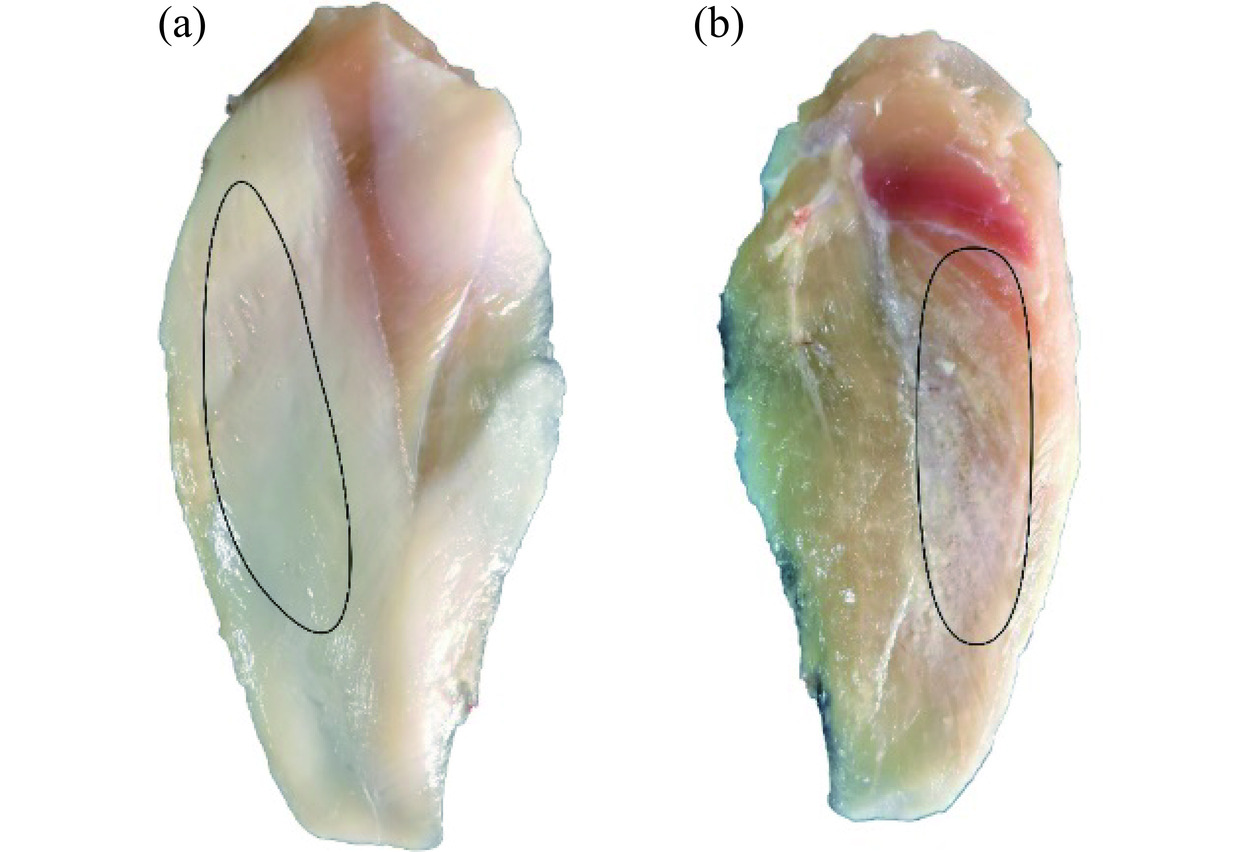
 下载:
下载:
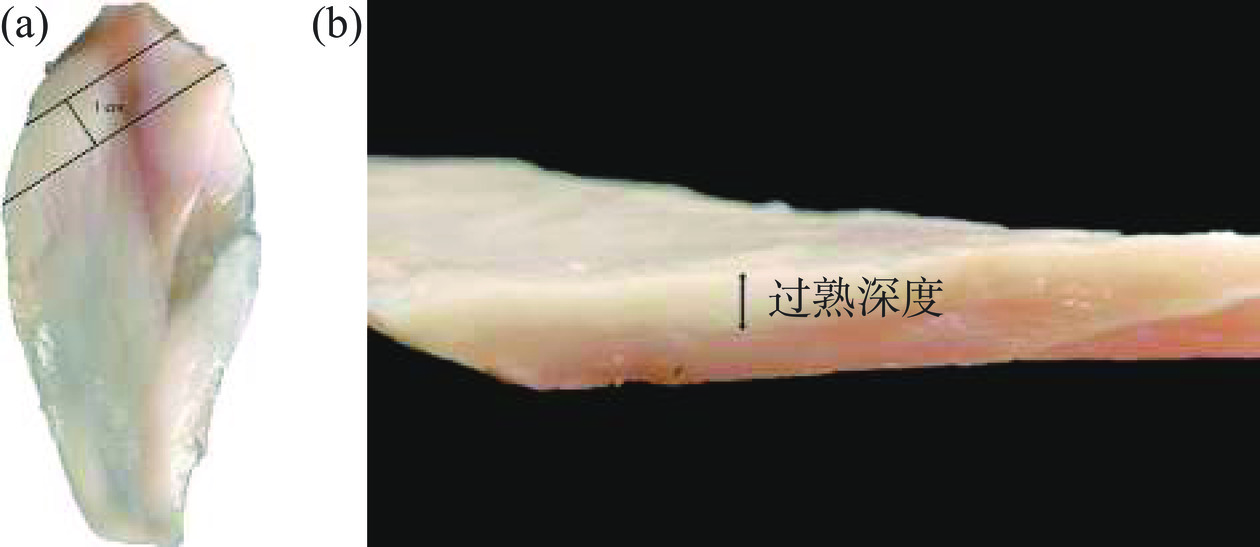
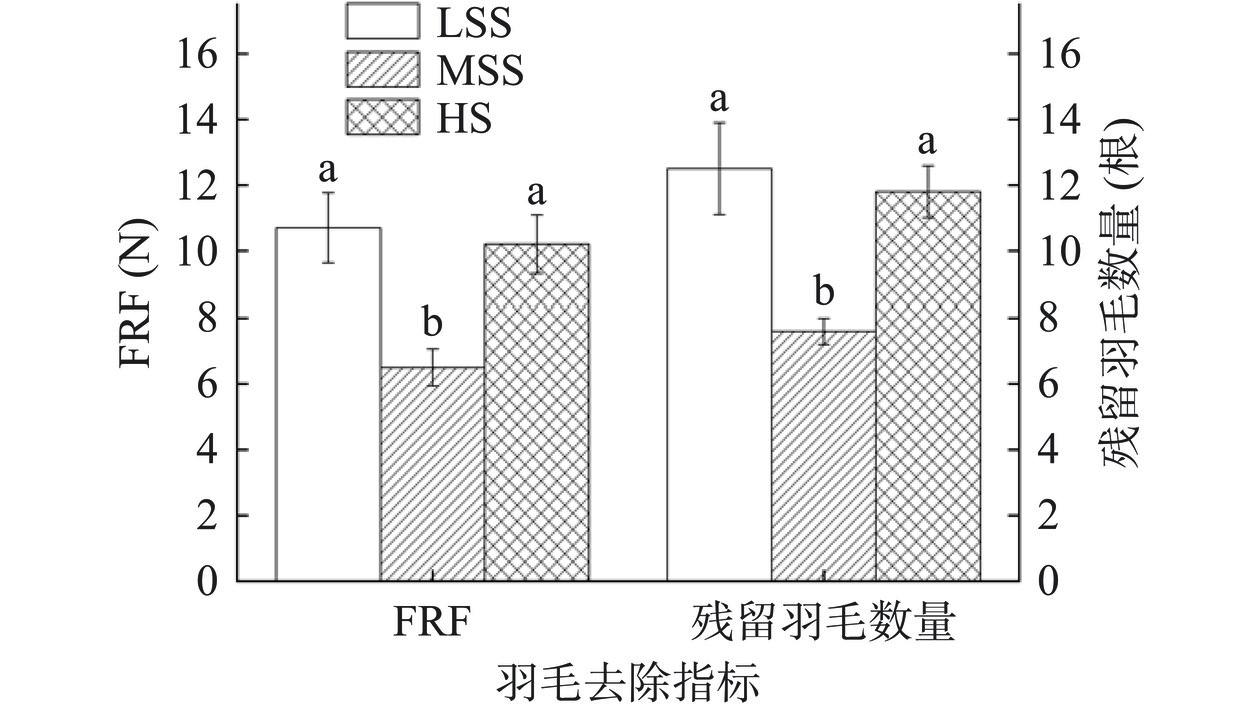
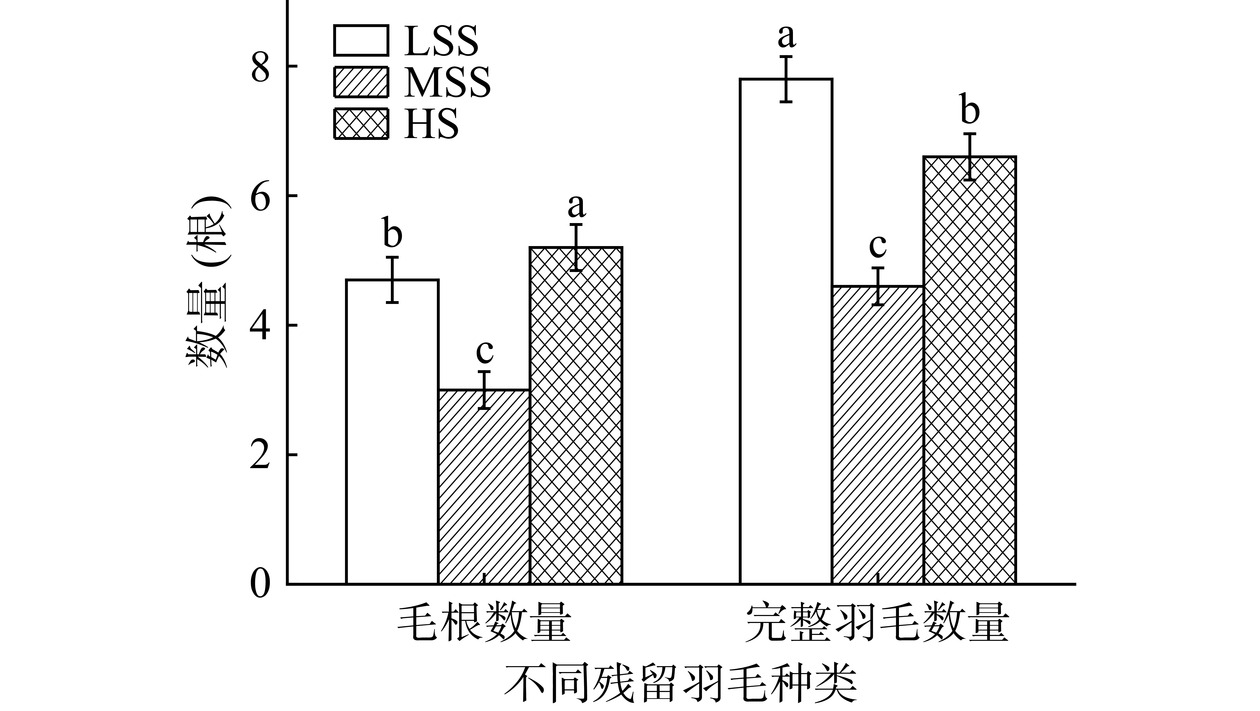

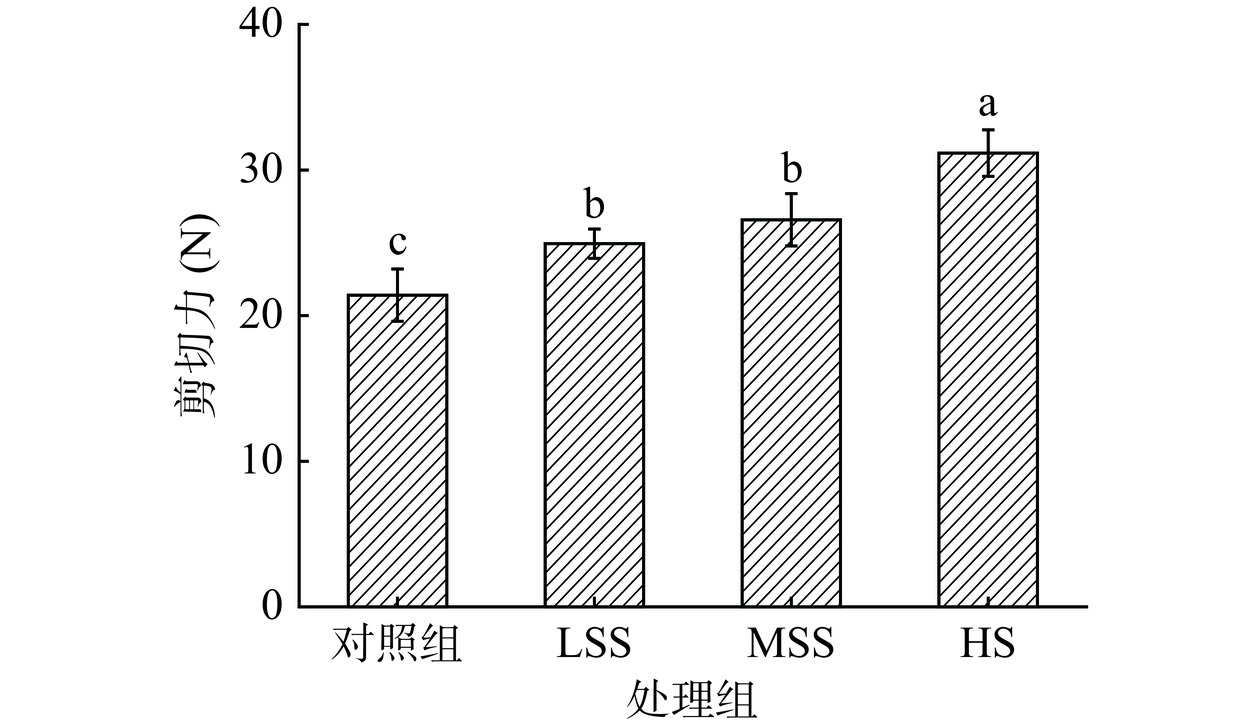

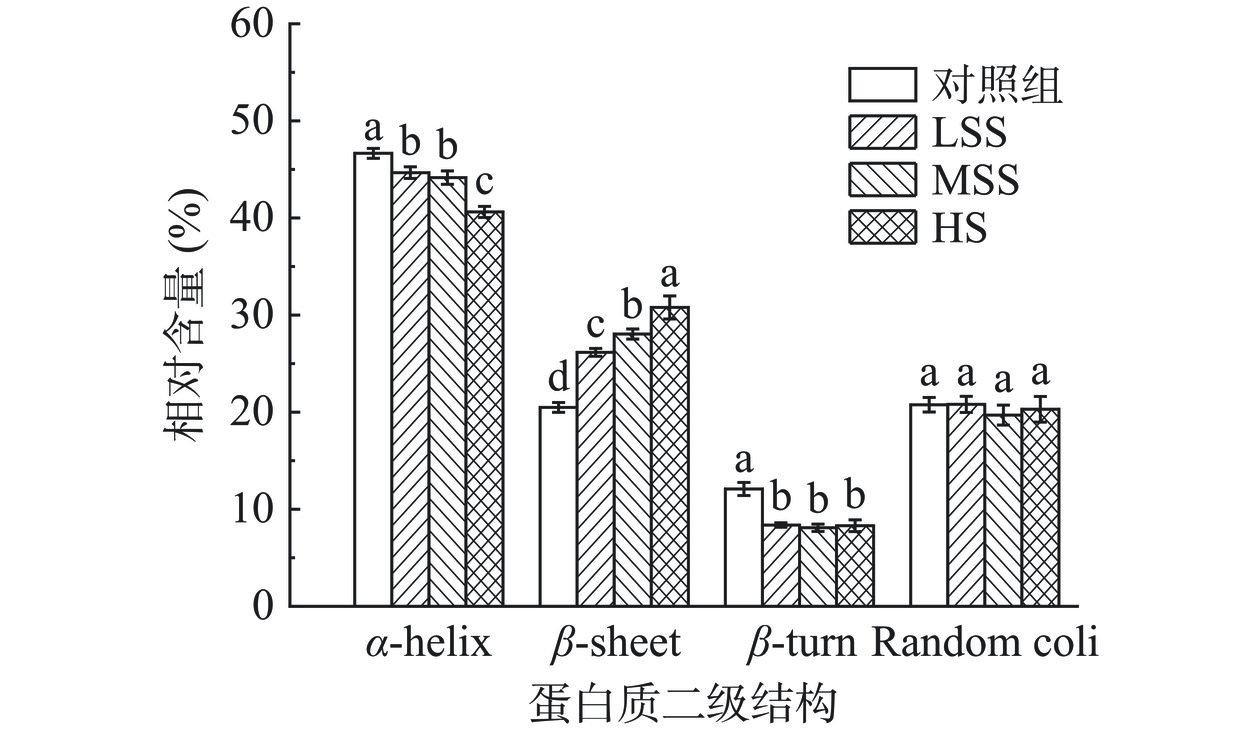
 下载:
下载:
